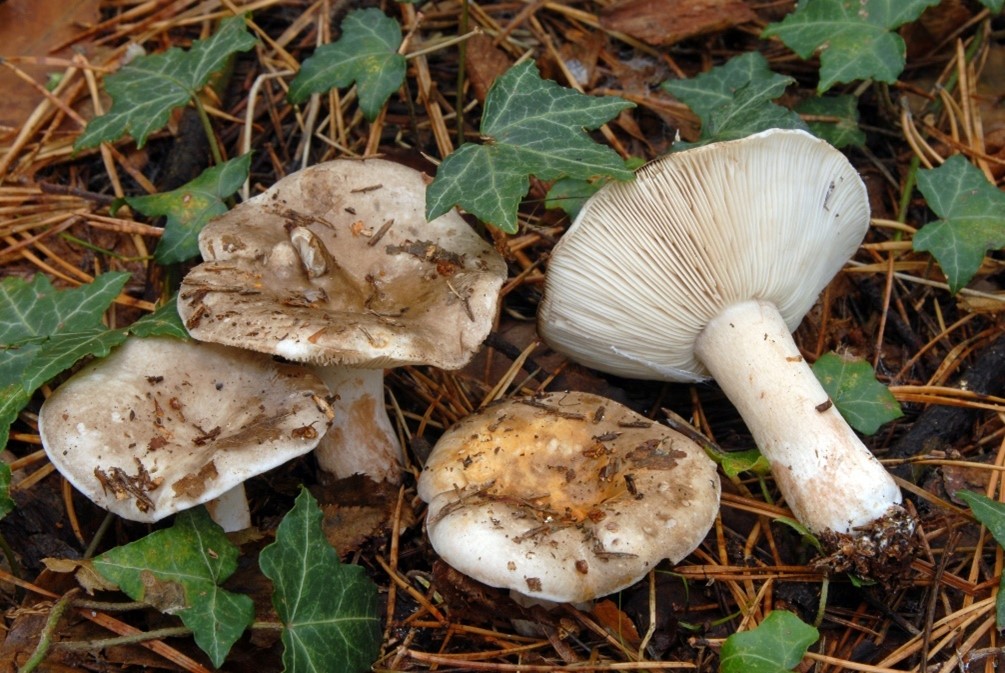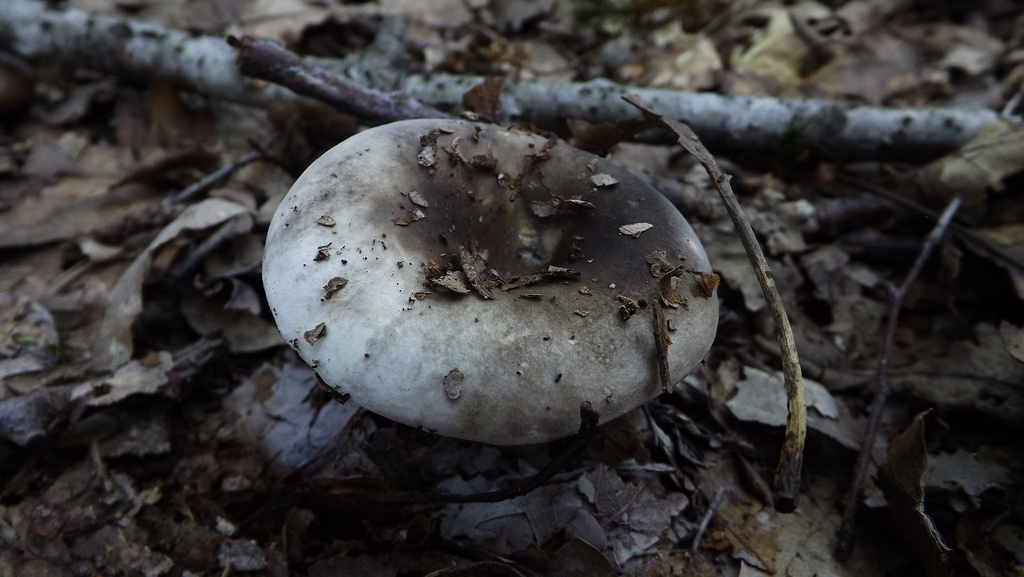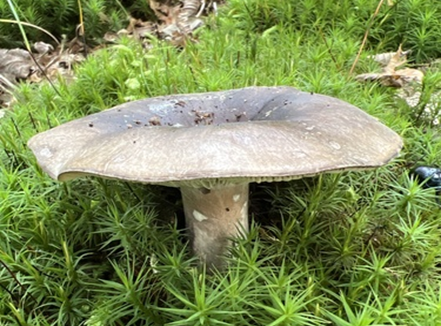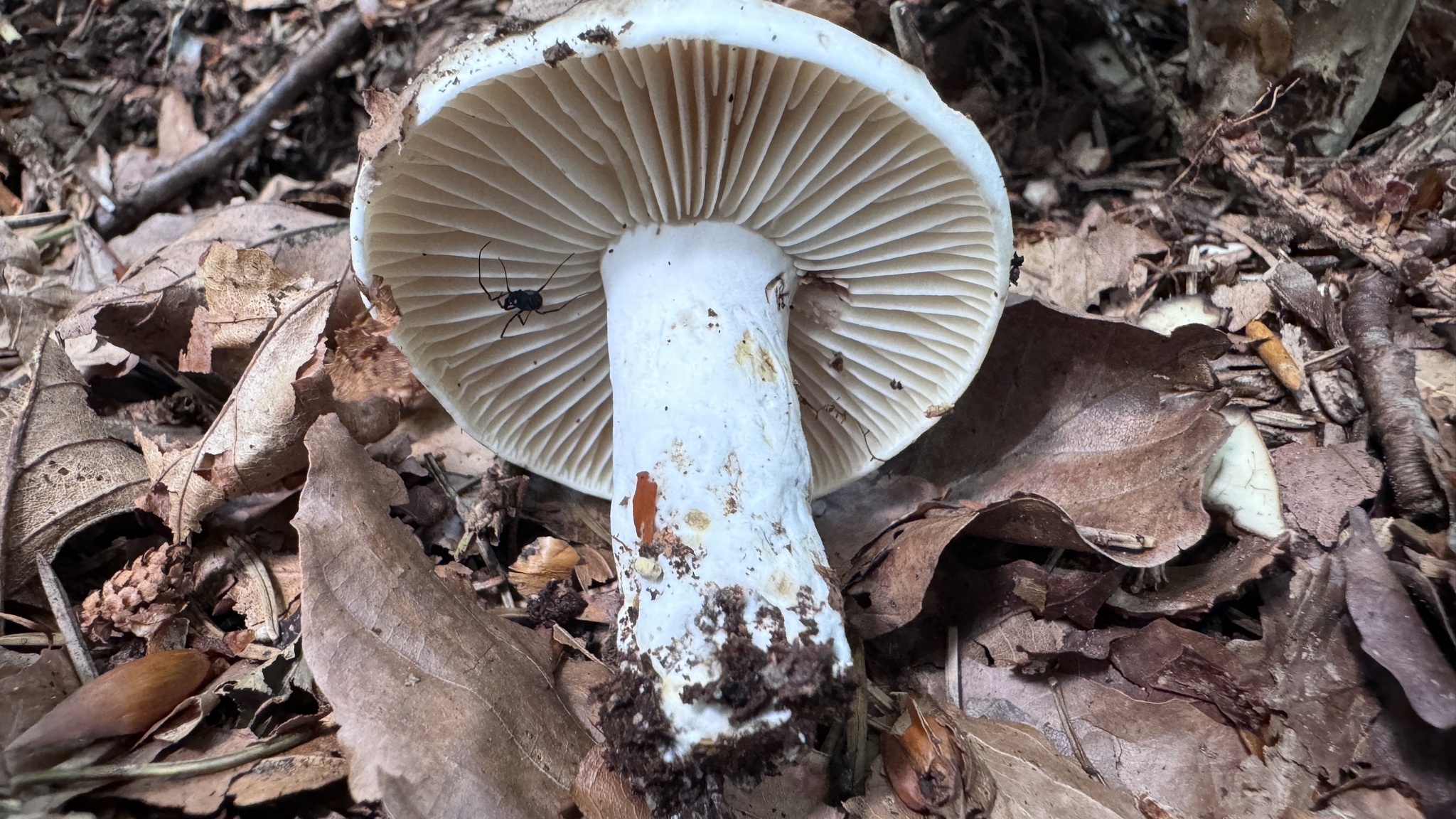ເລກລຳດັບທີ: 128
ລະດັບການຮວບຮວມຂໍ້ມູນ: ເກີອບສົມບູນ
ປັບປູງຄັ້ງລ່າສຸດ: 2024-10-20
ເຫັດຖ່ານ
Charcoal Russula
Russula densifolia Secr. ex Gillet
ເຊື້ອເຫັດ
ເຊື້ອຣາທີ່ເກີດຕາມດິນ
×
ຊື່ທ້ອງຖີ່ນ:
( Crowded Brittlegill, Dense-Gilled Russula)
ຊື່ພ້ອງ
:
Russula densifolia Secr.
Russula densifolia f. cremeispora Shaffer
Russula densifolia f. dilatoria Shaffer
Russula densifolia f. fragrans Shaffer
Russula densifolia f. gregata Shaffer
Russula densifolia var. caucasica Singer
Russula densifolia var. colettarum Dagron
Russula densifolia var. fumosella R.Socha
Russula nigricans var. densifolia (Secr. ex Gillet) Bataille
Russula densifolia f. cremeispora Shaffer
Russula densifolia f. dilatoria Shaffer
Russula densifolia f. fragrans Shaffer
Russula densifolia f. gregata Shaffer
Russula densifolia var. caucasica Singer
Russula densifolia var. colettarum Dagron
Russula densifolia var. fumosella R.Socha
Russula nigricans var. densifolia (Secr. ex Gillet) Bataille
ຊື່ສະກຸນ:
Russulaceae
ຊະນິດໃກ້ຄຽງ:
ເຫັດໄຄ/ Green-cracking Russula
ເຫັດໜ້າງົວ / Stinking Russula
ເຫັດນ້ຳແປ້ງ/ White Russula
ເຫັດກໍ່ແດງ/ Rosy Russula
ເຫັດແດງໃຫຍ່/ Bloody Brittlegill
ເຫັດໜ້າງົວ / Stinking Russula
ເຫັດນ້ຳແປ້ງ/ White Russula
ເຫັດກໍ່ແດງ/ Rosy Russula
ເຫັດແດງໃຫຍ່/ Bloody Brittlegill
ບັນຍາຍລັກສະນະທາງພືດສາດ:
ກ້ານເຫັດຖ່ານມີຄວາມຍາວ 3 ຫາ 7,5 ຊມ. ແລະ ໜາ 2 ຫາ 4 ຊມ. ເຮດໃຫ້ແໜ້ນ ແລະ ແຂງແຮງ, ອາດມີຄວາມໜາເທົ່າກັນ ຫຼື ບາງກ່ວາເລັກນ້ອຍ 7ໂຄນກ້ານເປັນປຸ່ມ), ຜິວຂອງກ້ານເຮັດມີຮອຍຮຽວຍົ້ນເລັກນ້ອຍ ແລະ ເປັນສີຂາວເມື່ອຍັງອ່ອນ ແລະ ຈະປ່ຽນເປັນສີເທົາຈົນເກືອບດຳເມື່ອແກ່ຂື້ນ, ແຕ່ລຳຕົ້ນທີ່ຊ້ຳຈະມີສີຄ້າຍນ້ຳສົ້ມສາຍຊູ ຈາກນັ້ນຈະປ່ຽນສີເປັນສີເທົາ, ສີນ້ຳຕານຈົນກາຍເປັນສີດຳ, ເນື້ອດ້ານໃນຂອງກ້ານຈະເປັນສີຂາວ.
ໝວກເຫັດມີຂະໜາດກວ້າງ 7 ຫາ 13 ຊມໃ ແລະ ນູນເມື່ອຍັງອ່ອນ ແຕ່ເມືອຂະໃຫຍ່ໃຫຍ່ຂື້ນຈະປ່ຽນຮູບຮ່າງເປັນຊົງແບນ ຫຼື ວ້ຳເລັກນ້ອຍ, ໂດຍຈະມີລັກສະນະເປັນຄື້ນ, ຂອບຈະເລີ່ມມ້ວນເຂົ້າດ້ານໃນ ແລະ ຄ່ອຍໆໂຄ້ງລົງ, ພື້ນຜິວລຽບ ແລະ ອາດມີຄວມໜ້ຽວເລັກນ້ອຍເມື່ອອາກາດຊຸ່ມ ແລະ ມັກມີສິງເສດເຫຼືອປົກຄຸມ, ສີຂອງໝວກເຫັດຊະນິດນີ້ເປັນສີຄີມເຂັ້ມ ແລະ ປ່ຽນເປັນສີນ້ຳຕານປົນເທົາເມື່ອແກ່ຂື້ນ.
ເນື້ອເຫັດຈະຈືດ, ແຂງ ແລະ ກອບ ເມື່ອມີບາດແຜເນື້ອຈະຄ່ອຍປ່ຽນເປັນສີເທົາ, ນ້ຳຕານ ຫຼື ເກືອບດຳ, ມີກິ່ນອ່ອນໆ ແລະ ຣົດຊາດແຕກຕ່າງກັນໄປຕັ້ງແຕ່ຣົດຊາດອ່ອນໄປຈົນຮອດຣົດຊາດສົ້ມ.
ເງືອກເຫັດຖ່ານມີລັກສະນະເປັນແສກຕິດກັບກ້ານ ຫຼື ຍື່ນລົງມາເລັກນ້ອຍຕາມກ້ານ, ເງືອກຈະຮຽງໃກ້ກັນ ແລະ ກວ້າງປານກາງ ໃນໄລຍະທຳອິດ ເງືອກຈະມີສີຄີມປົນສີນ້ຳຕານ ຈາກນັ້ນຈະປ່ຽນເປັນສີນ້ຳຕານປົນເທົາ ແລະ ປ່ຽນເປັນສີບົວປົນສົ້ມ ກ່ອນຈະຄ່ອຍໆປ່ຽນເປັນສີເທົາ, ສີນ້ຳຕານ ແລະ ສີດຳໃນທີ່ສຸດ.
ທີ່ມາ: [1]
ໝວກເຫັດມີຂະໜາດກວ້າງ 7 ຫາ 13 ຊມໃ ແລະ ນູນເມື່ອຍັງອ່ອນ ແຕ່ເມືອຂະໃຫຍ່ໃຫຍ່ຂື້ນຈະປ່ຽນຮູບຮ່າງເປັນຊົງແບນ ຫຼື ວ້ຳເລັກນ້ອຍ, ໂດຍຈະມີລັກສະນະເປັນຄື້ນ, ຂອບຈະເລີ່ມມ້ວນເຂົ້າດ້ານໃນ ແລະ ຄ່ອຍໆໂຄ້ງລົງ, ພື້ນຜິວລຽບ ແລະ ອາດມີຄວມໜ້ຽວເລັກນ້ອຍເມື່ອອາກາດຊຸ່ມ ແລະ ມັກມີສິງເສດເຫຼືອປົກຄຸມ, ສີຂອງໝວກເຫັດຊະນິດນີ້ເປັນສີຄີມເຂັ້ມ ແລະ ປ່ຽນເປັນສີນ້ຳຕານປົນເທົາເມື່ອແກ່ຂື້ນ.
ເນື້ອເຫັດຈະຈືດ, ແຂງ ແລະ ກອບ ເມື່ອມີບາດແຜເນື້ອຈະຄ່ອຍປ່ຽນເປັນສີເທົາ, ນ້ຳຕານ ຫຼື ເກືອບດຳ, ມີກິ່ນອ່ອນໆ ແລະ ຣົດຊາດແຕກຕ່າງກັນໄປຕັ້ງແຕ່ຣົດຊາດອ່ອນໄປຈົນຮອດຣົດຊາດສົ້ມ.
ເງືອກເຫັດຖ່ານມີລັກສະນະເປັນແສກຕິດກັບກ້ານ ຫຼື ຍື່ນລົງມາເລັກນ້ອຍຕາມກ້ານ, ເງືອກຈະຮຽງໃກ້ກັນ ແລະ ກວ້າງປານກາງ ໃນໄລຍະທຳອິດ ເງືອກຈະມີສີຄີມປົນສີນ້ຳຕານ ຈາກນັ້ນຈະປ່ຽນເປັນສີນ້ຳຕານປົນເທົາ ແລະ ປ່ຽນເປັນສີບົວປົນສົ້ມ ກ່ອນຈະຄ່ອຍໆປ່ຽນເປັນສີເທົາ, ສີນ້ຳຕານ ແລະ ສີດຳໃນທີ່ສຸດ.
ທີ່ມາ: [1]
ນິເວດວິທະຍາ
ເຂດກະຈາຍພັນທົ່ວໂລກ:
Native to Andorra, Armenia, Austria, Azerbaijan, Belgium, Benin, Bhutan, Bosnia and Herzegovina, Canada, China, Croatia, Cuba, Czechia, Denmark, Estonia, Finland, France, Georgia, Germany, Gibraltar, Greece, Holy See, Hong Kong, Hungary, Iceland, India, Ireland, Isle of Man, Italy, Japan, Korea, Lao People's Democratic Republic, Latvia, Liechtenstein, Lithuania, Luxembourg, Macao, Malaysia, Mexico, Monaco, Montenegro, Nepal, Netherlands, North Macedonia, Norway, Poland, Portugal, Russian Federation, Saint Pierre and Miquelon, San Marino, Serbia, Singapore, Slovakia, Slovenia, Spain, Sweden, Switzerland, Thailand, Türkiye, United Kingdom, United States. [3]
Global distribution of the Russula densifolia between 2004 to 2024. Source: [2]
Global distribution of the Russula densifolia between 2004 to 2024. Source: [2]
ເຂດກະຈາຍພັນໃນລາວ
:
ເຂດພູສູງສາຍພູຫຼວງ ແລະ ເຂດພູພຽງແຂວງຊຽງຂວາງ

ເຂດກະຈາຍພັນຕາມພູມສັນຖານ
:
ປ່າປະສົມປ່ຽນໃບ
ປ່າແປກ
ປ່າແປກປະສົມປ່າໃບກ້ວາງ
ປ່າແປກ
ປ່າແປກປະສົມປ່າໃບກ້ວາງ
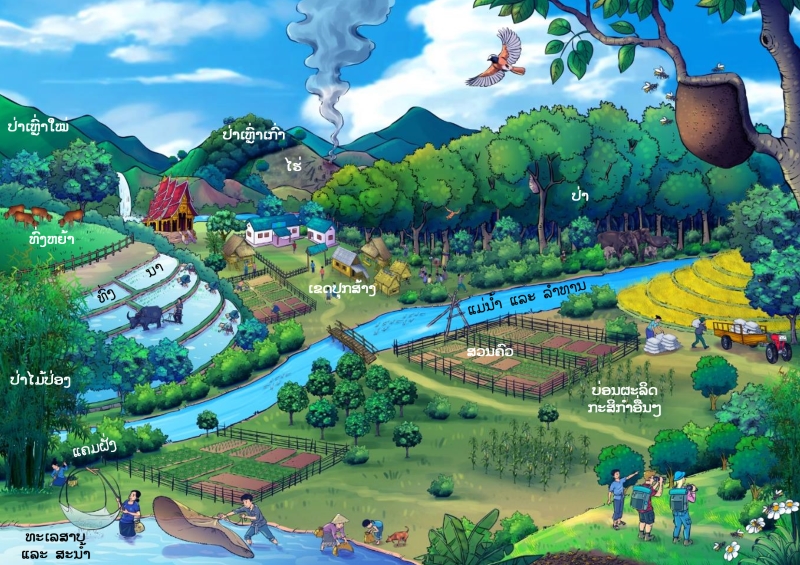
ສະເພາະຖິ່ນໃນລາວ:
ພື້ນເມືອງ
ຮຸກຮານ
:
ບໍ່ຮຸກຮານ
ສະຖານະພາບການອະນູຮັກ IUCN
:
ມີຄວາມສ່ຽງໜ້ອຍສຸດ
ສະຖານະພາບການອະນຸຮັກແຫ່ງຊາດລາວ
:
ບໍ່ຖືກລະບຸໃນບັນຊີປະເພດໃດ
ການນຳໃຊ້
ປະເພດການນຳໃຊ້:
ອາຫານ
ພືດເປັນຢາ
ພືດເປັນຢາ
ບັນຍາຍການນຳໃຊ້:
ອາຫານ: ໃນຫຼວງພະບາງມີເຫັດປ່າຫຼາຍຊະນິດເຊັ່ນ ເຫັດຖ່ານກໍ່ມີຢູ່ໃນຕະຫຼາດເຫຼົ່ານີ້. ເຖິ່ງແມ່ນວ່າເຫັດຊະນິດອາດບໍ່ແມ່ນເຫັດທີ່ຄົນນິຍົມບໍລິໂພກຫຼາຍທີ່ສຸດ ແຕ່ເຫັດຊະນິດນີ້ມີວາງຈຳນ່າຍທົ່ວໄປ ເຊິ່ງສະແດງໃຫ້ເຫັນເຖິ່ງການນຳໃຊ້ເຫັດປ່າໃນອາາຫານລາວ ຢ່າງກວ້າງຂວາງ ໂດຍມັກຈະນຳເຫັດຊະນິດນີ້ປະສົມກັບອາຫານອື່ນໆ ເພື່ອເຮັດໃຫ້ມີຣົດຊາດທີ່ແຊັບເປັນເອກະລັກ. [4]
ການປູກ ການລ້ຽງ:
ຊະນິດທຳມະຊາດ
ລະດູການເກັບກູ້:
ເມສາ
ພຶກສະພາ
ພຶກສະພາ
ການຕະຫຼາດ ແລະ ຕ່ອງໂສ້ມູນຄ່າ:
N/A
ການຄຸ້ມຄອງຈັດການ
N/A
ໂພຊະນາການ
ຄຸນຄ່າທາງໂພຊະນາການ:
ບັນຍາຍຄຸນຄ່າທາງໂພຊະນາການ:
N/A
| ສານອາຫານ | /100g | ໝາຍເຫດ |
|---|---|---|
| ໂປຣຕີນ | N/A | N/A |
| ຄາໂບໄຮເດຣດ | N/A | N/A |
| ໄຂມັນ | N/A | N/A |
| ວິຕາມິນ | N/A | N/A |
| ແຮ່ທາດ | N/A | N/A |
| ເສັ້ນໄຍ | N/A | N/A |
ອ້າງອິງ
ເຄດິດຮູບພາບ:
Group of Russula densifolia in natural. [1] iNaturalist [Online]. Uploaded on 07 September 2023 by: Fabio Mau-ri. Available: https://www.inaturalist.org/observations/182161678. [Accessed: 24 April 2025]
Russula densifolia in juvenile form. [2] iNaturalist [Online]. Uploaded on 22 August 2024 by: fungus57. Avail-able: https://www.inaturalist.org/observations/237255059. [Accessed: 24 April 2025]
Russula densifolia in full bloom seen from the side. [3] iNaturalist [Online]. Uploaded on 23 September 2024 by: tigger501. Available: https://www.inaturalist.org/photos/434466732 [Accessed: 14 October 2024]
Gill of Russula densifolia. [4] iNaturalist [Online]. Uploaded on 24 August 2024 by: agnes2705. Available: https://www.inaturalist.org/observations/237498518. [Accessed: 24 April 2025]
Russula densifolia in juvenile form. [2] iNaturalist [Online]. Uploaded on 22 August 2024 by: fungus57. Avail-able: https://www.inaturalist.org/observations/237255059. [Accessed: 24 April 2025]
Russula densifolia in full bloom seen from the side. [3] iNaturalist [Online]. Uploaded on 23 September 2024 by: tigger501. Available: https://www.inaturalist.org/photos/434466732 [Accessed: 14 October 2024]
Gill of Russula densifolia. [4] iNaturalist [Online]. Uploaded on 24 August 2024 by: agnes2705. Available: https://www.inaturalist.org/observations/237498518. [Accessed: 24 April 2025]
ອ້າງອິງ:
[1] "Russula densifolia," MykoWeb, 2024. [Online]. Available: https://www.mykoweb.com/CAF/species/Russula_densifolia.html. [Accessed: Apr. 24, 2025].
[2] Global Biodiversity Information Facility (GBIF), “Russula densifolia Secr. ex Gillet,” [Online]. Available: https://www.gbif.org/species/2551191 [Accessed: 14 October 2024]
[3] "Species Information," IUCN Red List of Threatened Species, 2024. [Online]. Available: https://www.iucnredlist.org/species/230148457/260386232#habitat-ecology. [Accessed: Apr. 24, 2025].
[4] A. Author, " Wild food plants and fungi sold in the markets of Luang Prabang, Lao PDR," Journal of Ethnobiology and Ethnomedicine, vol. 16, no. 1, pp. 1-10, 2020. [Online]. Available: https://ethnobiomed.biomedcentral.com/articles/10.1186/s13002-020-00423-y. [Accessed: Apr. 24, 2025].
[5] "Wild Mushroom Survey Report 2014," Open Development Mekong, 2014. [Online]. Available: https://data.opendevelopmentmekong.net/dataset/a136ed27-71c2-4e9b-b3fe-767c80d62c69/resource/ac76e8e4-48e3-45d0-8018-6c1ae52f4ae9/download/wildmusroomsurveyreport2014final.pdf. [Accessed: Apr. 24, 2025].
[6] "Russula densifolia," Howard Birds, 2024. [Online]. Available: https://howardbirds.website/fungipdfs/Russula_densifolia.pdf. [Accessed: Apr. 24, 2025].
[2] Global Biodiversity Information Facility (GBIF), “Russula densifolia Secr. ex Gillet,” [Online]. Available: https://www.gbif.org/species/2551191 [Accessed: 14 October 2024]
[3] "Species Information," IUCN Red List of Threatened Species, 2024. [Online]. Available: https://www.iucnredlist.org/species/230148457/260386232#habitat-ecology. [Accessed: Apr. 24, 2025].
[4] A. Author, " Wild food plants and fungi sold in the markets of Luang Prabang, Lao PDR," Journal of Ethnobiology and Ethnomedicine, vol. 16, no. 1, pp. 1-10, 2020. [Online]. Available: https://ethnobiomed.biomedcentral.com/articles/10.1186/s13002-020-00423-y. [Accessed: Apr. 24, 2025].
[5] "Wild Mushroom Survey Report 2014," Open Development Mekong, 2014. [Online]. Available: https://data.opendevelopmentmekong.net/dataset/a136ed27-71c2-4e9b-b3fe-767c80d62c69/resource/ac76e8e4-48e3-45d0-8018-6c1ae52f4ae9/download/wildmusroomsurveyreport2014final.pdf. [Accessed: Apr. 24, 2025].
[6] "Russula densifolia," Howard Birds, 2024. [Online]. Available: https://howardbirds.website/fungipdfs/Russula_densifolia.pdf. [Accessed: Apr. 24, 2025].
ຜູ້ສ້າງ Factsheet:
ຜູ້ກວດສອບ Factsheet:
,
